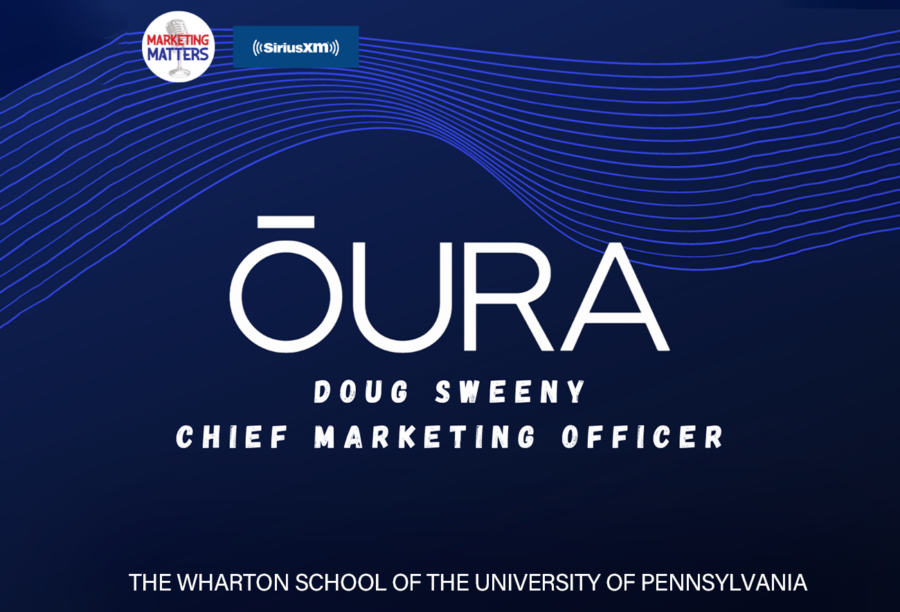The following piece is written by Wharton marketing professor Barbara E. Kahn, co-host of the Marketing Matters podcast.
As luck would have it, Americus and I spoke with Doug Sweeny, Chief Marketing Officer at Oura on the same day the company announced a more sophisticated integration with Apple Watch. Oura had always offered an iPhone app and allowed its data to be integrated with the Apple Health App (unlike Fitbit data which is not integrated), but the new announcement now allows better integration with the Apple watch. This means you can see Oura’s scores on your watch in its app bank, and if you want you can even put its little icons on your watch face.
But this news is only relevant for those who already know what Oura is – in our interview we wanted to understand how Oura’s fitness philosophy differed from other devices (I wear three, Apple Watch, Fitbit, and the Oura ring, Americus wears three too, Apple Watch, Whoop, and the Oura ring) and how and why they made the marketing decisions they made.
We started with the Oura fitness philosophy. Oura was founded in Finland, which according to Sweeny is known as the “happiest place on earth.” Their goal is not to push you into becoming the greatest athlete or the fitness king/queen of your neighborhood, but rather to help you find balance. Oura’s focus is on sleep metrics, which they believe are “foundational to improving your mental and physical health.”
The differences between Oura and other devices are evident immediately from its form. Oura looks like jewelry (in fact, we found out they have a Gucci version!). As a fitness device, it’s invisible, it doesn’t have a screen, it isn’t begging for your attention. It was always designed to be complementary to an Apple watch or Garmin. Because it’s so light and unobtrusive, and its battery lasts for days without recharging, it’s easy to wear to sleep — which of course is central to their purpose.
It’s also worn on the finger which according to Sweeny is the best place to measure your pulse and respiratory functions because the signals there are stronger than anywhere else (in fact, that’s why when you go to the doctor, they put that oximeter on your finger).
The graphic interface that communicates your data is simple and designed to be calming. The color palette, which you look at when you wake up, is a lot of blues and black — again not fighting for your attention. If there is something that should be called out, that metric is featured in red or orange.
The data the Oura ring presents is sophisticated. The company maintains their accuracy is comparable to gold-standard sleep lab testing. Oura measures heart rate, blood oxygen sensing, activity levels, and sophisticated sleep metrics like REM sleep and deep sleep. Those are measures I get on some of my other devices too. But Oura also measures temperature and heart rate variability (HRV), which I hadn’t encountered before.
One critical distinguishing feature of Oura’s reporting is that once the device learns your base rates, the focus is on looking for changes in the data. Anomalies are highlighted, so Oura provides an early voice as to how your body is doing. With Oura, you have your own within-subject experimental platform. You can see how a late-night snack affects your metrics, or what that extra glass of wine will do.
From the marketing perspective, Oura made some interesting decisions too. First, they have a rabid fan base, and almost everyone who has heard about Oura has heard about them from a family member, friend, or co-worker. According to Sweeny, the Oura community is promoting the product on their behalf.
Their pricing model is different from others as well. To get the suite of data that really differentiates Oura from other devices, customers pay a monthly fee of $5.99. Sweeny argues that revenue model ensures that the company can invest in adding value to the software and the app experience. (If customers just buy the ring without the data plan, they get their three summary scores –Readiness, Sleep, and Activity– but not the rest of the data after the first month).
Oura is also focusing on partnerships. The Gucci relationship is one, focusing on the jewelry aspect of the ring. But they are also partnering with Natural Cycles which is a family planning and contraception app, in which measuring temperature is an important aspect. They have robust employer and sports team programs too. They partnered with the NBA and WNBA during the COVID “bubble” experiments to help measure rising temperatures and early warnings about possible COVID concerns. Their programs with employers feature wellness goals to keep employees healthy and happy.
Finally, Oura is starting to think about how to grow and scale. Currently they are mostly direct-to-consumer, and available through Therabody, a wellness tech company. They are sold in Japan. Where Oura will go next, Sweeny wasn’t too specific. Maybe we’ll have to interview him again next year.


